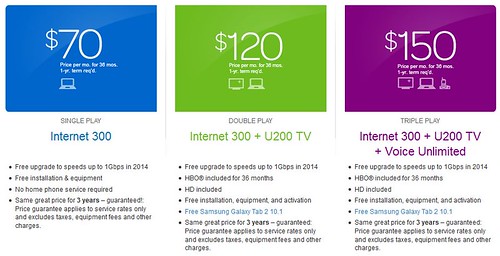AT&T today said it will “expand its ultra-fast fiber network to up to 100 candidate cities and municipalities nationwide. AT&T says it now is exploring 25 metro areas for fiber deployment.
The list of 21 candidate metropolitan areas includes: Atlanta, Augusta, Charlotte, Chicago, Cleveland, Fort Worth, Fort Lauderdale, Greensboro, Houston, Jacksonville, Kansas City, Los Angeles, Miami, Nashville, Oakland, Orlando, San Antonio, San Diego, St. Louis, San Francisco, and San Jose.
AT&T says it will work with local leaders in these markets to discuss ways to bring the service to their communities. Similar to previously announced metro area selections in Austin and Dallas and advanced discussions in Raleigh-Durham and Winston-Salem, “communities that have suitable network facilities, and show the strongest investment cases based on anticipated demand and the most receptive policies will influence these future selections and coverage maps”.
AT&T’s GigaPower was first made “available to tens of thousands of households in Austin and surrounding communities in December 2013,” and that number will double this year, the company said. Austin has 325,000 households.
GigaPower Internet-only service costs $70 and has speeds of 300Mbps, which is supposed to be upgraded to 1Gbps this year. TV and voice packages bring the price up to $120 or $150 a month.
AT&T’s fiber announcement comes two months after Google announced that it will try to bring fiber Internet to 34 cities in nine metro areas. Google’s “gigabit” Internet service already offers service in Kansas City and in Provo, Utah, and is building a network in Austin.
Google presented the cities with a 29-page checklist of needs (pdf) – and a May 1 deadline to respond. The city of Portland is trying to match the company’s stated requirements with city rules and resources, reports The Oregonian.
Google, for example, wants to put small networking cabinets in the public right of way around the city. They’re small – two feet on each side and four feet high – but it’s not the sort of thing Portland currently allows. And Google wants to install bigger boxes, what it calls “network huts,” on public property to house its equipment and fiber. Each is 12 feet by 28 feet, meaning they’re too big for the right of way along public streets.
Portland is being a pushover to snag Google Fiber, writes Seattle Times columnist Brian Dudley. Or is it sour grapes from Seattle’s failed Gigabit networking plan?
Google and AT&T may be just as interested in providing fiber backbone to small cells and WiFi hotspots.
Cloud-based Radio Access Networks allow small radio heads to be mounted on utility poles and other public locations. With capacity demands of hotspots and cell sites hitting 300-600 Mbps or more, the only practical way to feed them is fiber. The major difference between AT&T and Google may be their business model – Google generates almost all its revenue through advertising while AT&T generates its revenue though subscriptions.
Related Dailywireless articles include; Gigabit Squared: DOA?, Gigabit Seattle: Late Paying Bills, Seattle’s Gigabit Fiber CityNet, Gigabit Seattle: $80/mo, Chicago Announces Free WiFi in Parks, Chicago Gets 24 Broadband Proposals, Google Fiber Launches in Kansas City, Street light Provides Wi-Fi, Cell Coverage, Hotspot 2.0, Intel: Basestation in the Cloud,
Posted on Tue, 22 Apr 2014 15:07:23 +0000 at http://www.dailywireless.org/2014/04/22/...tro-areas/
Comments: http://www.dailywireless.org/2014/04/22/.../#comments


